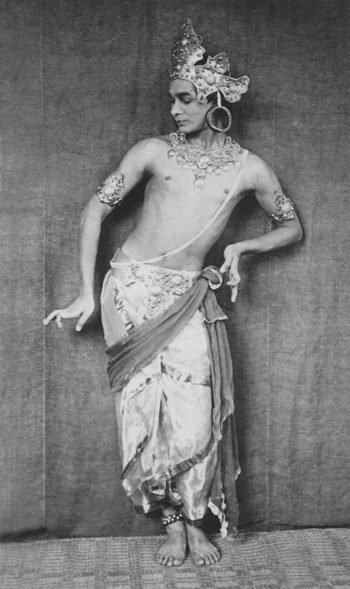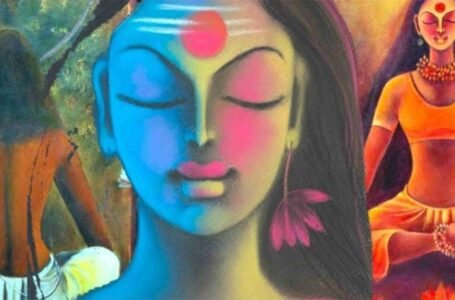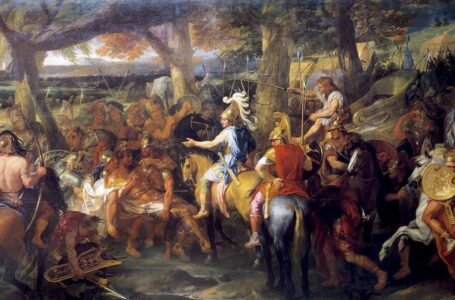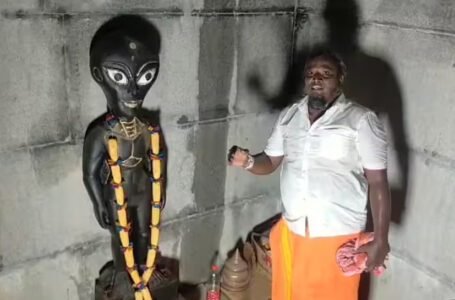Kalpana (1948): The First Indian Dance Movie by Uday Shankar

Cinema in India has always been a vivid blend of art, storytelling, and culture. From the early silent films to the lavish productions of Bollywood, Indian cinema has reflected the diverse traditions of the country. One such significant film that revolutionized Indian cinema is Kalpana, released in 1948. This was no ordinary film; it was India’s first feature-length dance movie, written and directed by Uday Shankar, a celebrated dancer and choreographer. Kalpana is widely regarded as a cinematic marvel that blended the art of dance with social and political commentary, making it a milestone in Indian film history.

The Visionary Behind Kalpana: Uday Shankar
Before delving into the specifics of the film, it is important to understand the mastermind behind it, Uday Shankar. Born in Udaipur in 1900, Shankar was a visionary who had a profound impact on the evolution of Indian dance. Though trained in Western art and ballet during his stay in Europe, Uday Shankar was deeply influenced by Indian classical dance forms, such as Bharatanatyam and Kathakali, and sought to create a new style that incorporated both traditional Indian dance and modern ballet techniques. He was one of the first Indian artists to take Indian dance to an international stage, performing across Europe and America during the 1920s and 1930s.
His artistic journey was always focused on integrating the performing arts with a modern sensibility, and his efforts to revive classical dance forms and present them in a new light earned him a pioneering position in the world of Indian dance. This desire to merge multiple art forms eventually led to the creation of Kalpana, where dance, drama, and film came together in an unprecedented fashion.

The Plot of Kalpana
At its heart, Kalpana is an allegorical film that tells the story of a young dancer’s dreams, ambitions, and struggles in a changing world. The protagonist, Udayan (played by Uday Shankar himself), is a dancer who dreams of establishing a dance academy that would rejuvenate Indian culture. His vision is to create a world where art transcends social and political barriers, promoting harmony and unity. The film unfolds in a dreamlike narrative, oscillating between reality and fantasy, as Udayan envisions a utopian world based on artistic freedom and cultural pride.
The storyline is simple yet profound. Udayan’s journey of setting up a dance academy is fraught with challenges, as he faces opposition from both society and the entrenched power structures. In this sense, Kalpana is not just a story about dance; it is a social and political commentary on post-colonial India. Through Udayan’s dreams and struggles, Shankar critiques the societal systems that suppress creative expression and impose rigid norms, thereby stifling artistic innovation.

The Revolutionary Use of Dance in Kalpana
What sets Kalpana apart from other films of its time is the way Uday Shankar used dance as a primary storytelling medium. In most films, dance is often an embellishment, used for entertainment or as a brief interlude in the narrative. However, in Kalpana, dance is the very language through which the story is told. The movements, choreography, and music are not mere additions to the plot; they are integral to conveying the emotions and themes of the film.
Shankar’s choreography in Kalpana was a fusion of Indian classical forms like Kathakali, Bharatanatyam, and Manipuri, with elements of modern dance. This blend created a unique dance vocabulary that was both contemporary and deeply rooted in Indian tradition. The dance sequences are not only aesthetically captivating but also loaded with symbolic meaning. For example, in one of the film’s most iconic scenes, a dance battle takes place between traditional values and modern ideologies, with the dancers’ movements reflecting the tensions and contradictions of Indian society at the time.

The film’s title, Kalpana, which means “imagination” in Sanskrit, reflects Shankar’s desire to push the boundaries of what was considered possible in dance and cinema. The entire film is an imaginative exploration of the power of dance to transcend reality, offering viewers a vision of a world where art, rather than politics or economics, serves as the foundation for human interaction.
Symbolism and Social Commentary in Kalpana
Although Kalpana is primarily a dance film, it also serves as a mirror to the political and social atmosphere of India during the 1940s. When the film was made, India had just gained independence from British rule, and the nation was undergoing a period of intense social, political, and cultural change. Through Kalpana, Shankar addresses issues such as colonialism, cultural identity, and the role of artists in a free society.

The character of Udayan represents the idealist artist who dreams of a better world but is continually thwarted by societal restrictions. His struggle to establish a dance academy can be interpreted as a metaphor for the struggle to define a post-colonial Indian identity. Just as Udayan seeks to create a space for artistic freedom, India was in the process of redefining itself after centuries of colonial rule. Kalpana subtly critiques the newly formed nation for its failure to prioritize culture and the arts, emphasizing that true freedom must include not just political independence but also the freedom to express oneself creatively.
The film also delves into the gender dynamics of the time. One of the central characters, Uma (played by Uday Shankar’s wife, Amala Shankar), is a dancer who shares Udayan’s dreams but faces additional struggles due to her gender. Through Uma, Shankar explores the limitations placed on women in Indian society and the potential for art to serve as a means of liberation.

Cinematic Innovations in Kalpana
In addition to its innovative use of dance, Kalpana was a cinematic experiment in many ways. Uday Shankar, though primarily a dancer, demonstrated a keen understanding of the film medium, using special effects, elaborate sets, and surreal imagery to bring his vision to life. The film is filled with dream sequences, in which dancers move through fantastical landscapes, defying the conventional rules of space and time. This imaginative use of space allowed Shankar to blur the lines between reality and fantasy, much like how the dances themselves transitioned seamlessly between the classical and the contemporary.
The film’s cinematography was handled by Subrata Mitra, who would later gain fame for his work with Satyajit Ray. Mitra’s work on Kalpana is notable for its dynamic camera movements, which complement the choreography and make the viewer feel like they are part of the dance. The lighting and framing of each scene were designed to highlight the dancers’ movements, making every sequence visually captivating.
While Kalpana was not a commercial success upon its release, it has since gained recognition for its artistic and cinematic achievements. Today, the film is considered a cult classic, appreciated for its boldness in combining art forms and its forward-thinking social message.

Legacy of Kalpana
Kalpana holds a special place in the history of Indian cinema not only as the first dance film but also as an artistic statement that transcends the boundaries of traditional filmmaking. Uday Shankar’s vision of integrating dance, drama, and cinema into a cohesive narrative paved the way for future filmmakers to experiment with form and content.
In a broader sense, Kalpana also contributed to the revival of Indian classical dance. The film’s success in presenting classical dance forms in a modern, cinematic context helped popularize these art forms among a wider audience, inspiring future generations of dancers and choreographers.
The film’s emphasis on the role of art in society remains relevant today. Uday Shankar believed that dance and other forms of artistic expression were essential to creating a balanced, harmonious world. In Kalpana, he imagined a society where art could overcome social and political barriers, fostering unity and cultural pride. This message, delivered through the medium of dance, continues to resonate in contemporary discussions about the role of the arts in shaping national and cultural identities.

Conclusion
Kalpana is a landmark film that represents the intersection of dance, cinema, and social commentary. Uday Shankar’s visionary approach to integrating Indian classical dance with cinematic storytelling created a unique and powerful film that continues to be admired for its artistic achievements. Though not immediately successful, Kalpana has grown in stature over the years, and its legacy is evident in the continued relevance of its themes and its pioneering role in the history of Indian cinema. Through Kalpana, Uday Shankar proved that dance is not just a form of entertainment but a powerful medium for conveying deep philosophical and political ideas.


